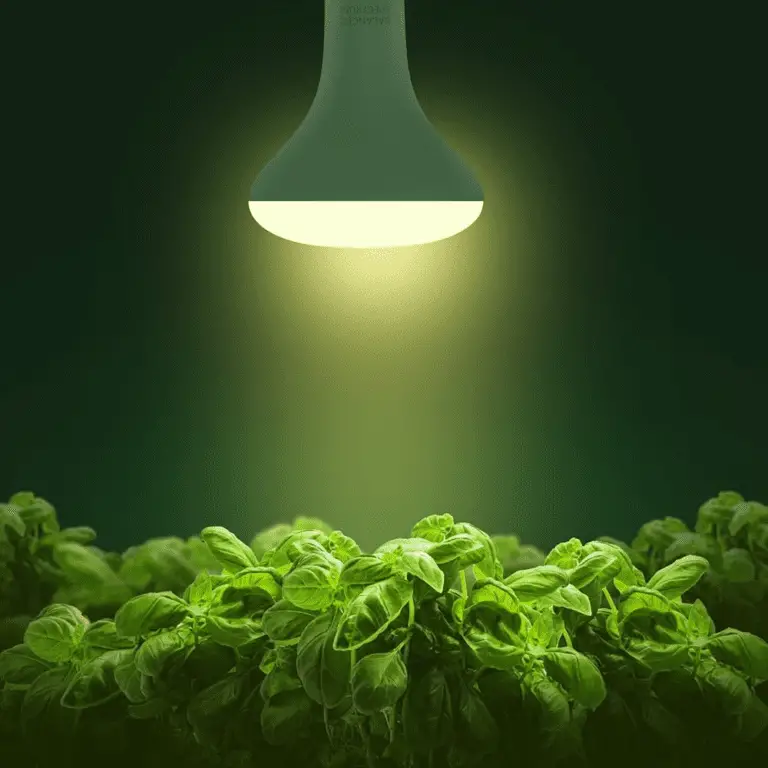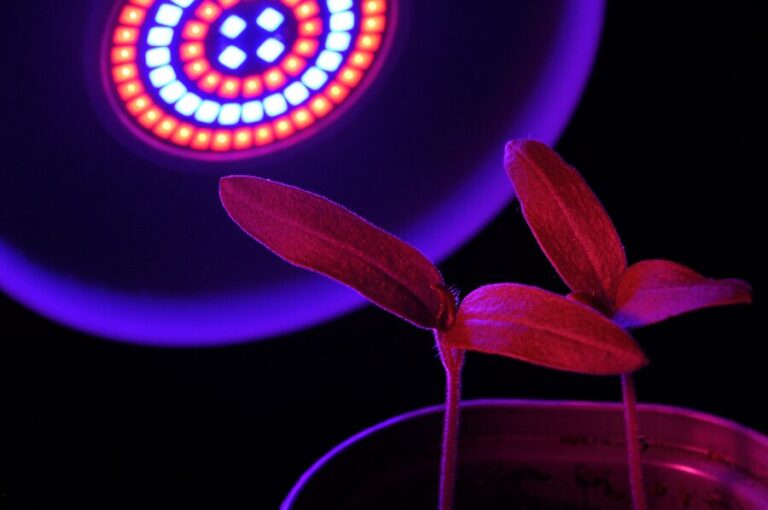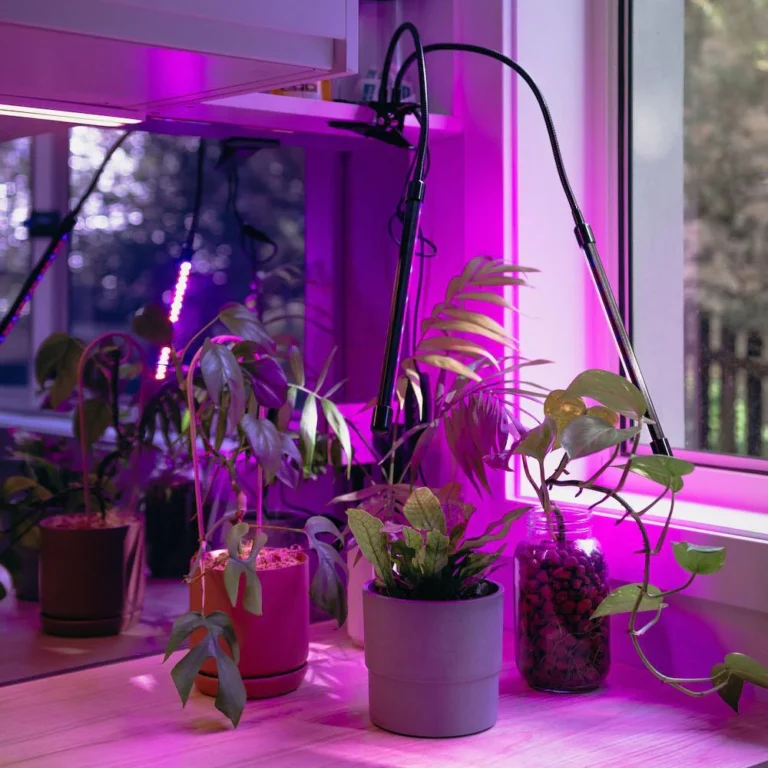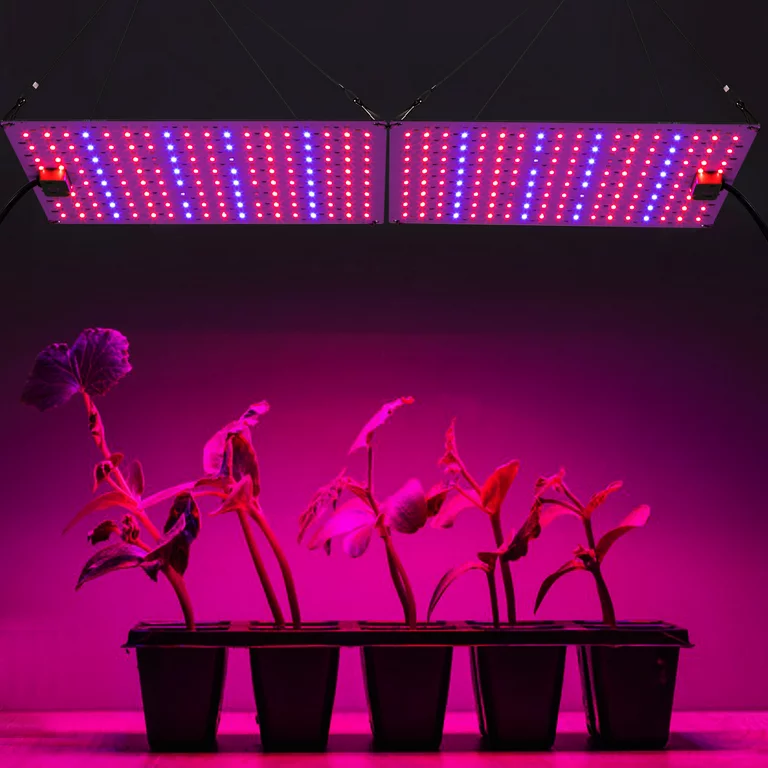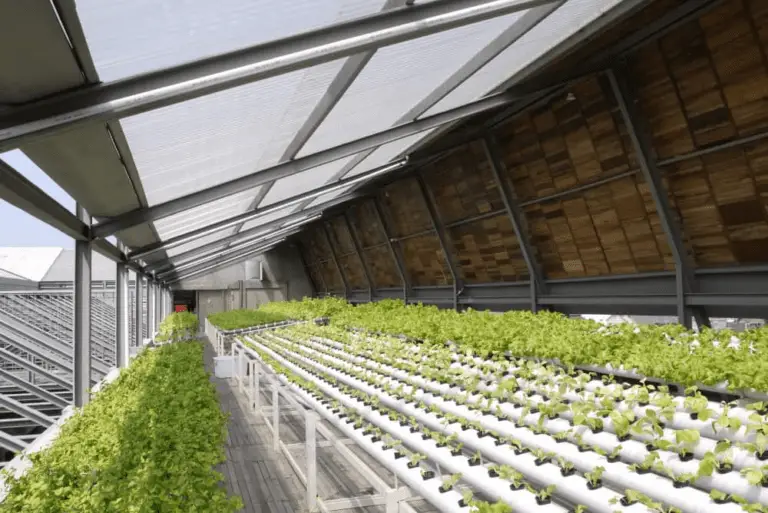How to Use Grow Lights Effectively for Hydroponic Plants: 6 Tips to Increase Yield
Table of Contents
Understanding the Role of Grow Lights in Hydroponic Plant Growth
Grow lights play a crucial role in hydroponic plant growth, providing the necessary light energy for photosynthesis to occur. In a hydroponic system, where plants are grown without soil, grow lights serve as a substitute for sunlight, ensuring that plants receive the light they need to thrive. By emitting the correct spectrum of light, grow lights enable plants to carry out the complex biochemical reactions necessary for growth, such as converting light energy into chemical energy through photosynthesis. This process allows plants to produce sugars and other essential compounds that fuel their development and enable the formation of strong, healthy roots, foliage, and ultimately, bountiful harvests.
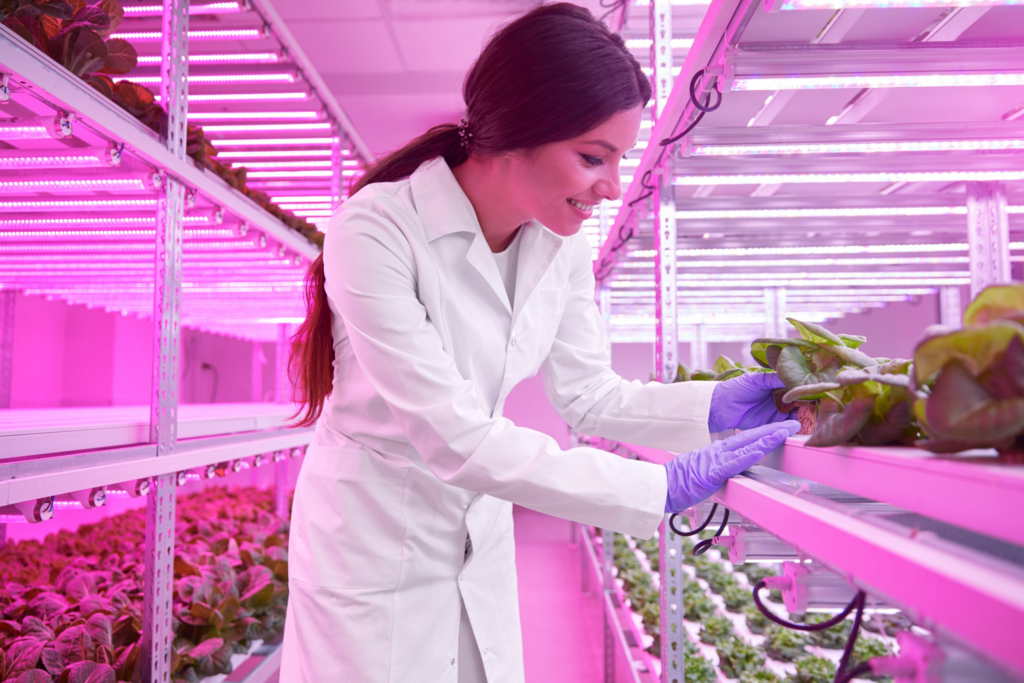
It is important to note that different types of plants have different light requirements, and grow lights can be tailored to meet these specific needs. While all plants require light to grow, the intensity and duration of light exposure can vary depending on the stage of growth and the specific species being cultivated. This versatility of grow lights allows gardeners and hydroponic enthusiasts to create optimal conditions for their plants, promoting healthier growth, faster development, and enhanced productivity. With a deeper understanding of the role of grow lights in hydroponic plant growth, gardeners can now explore the various types of grow lights available and select the most suitable options for their specific hydroponic setups.
Selecting the Right Type of Grow Lights for Your Hydroponic Setup
When it comes to selecting the right type of grow lights for your hydroponic setup, there are several factors to consider. Each type of grow light has its own advantages and disadvantages, and understanding these differences will help you make an informed decision.
One of the most popular types of grow lights for hydroponics is LED (light-emitting diode) lights. LED lights are energy-efficient, long-lasting, and emit a targeted spectrum of light that can be tailored to the specific needs of your plants. They produce less heat than other types of lights, reducing the risk of damage to your plants, and can be easily dimmed or adjusted to provide the optimal light intensity for different growth stages.
Another option to consider is fluorescent lights. Fluorescent lights are affordable, readily available, and produce a wide spectrum of light that is suitable for most plants. They are also cooler than other types of grow lights, making them ideal for smaller or enclosed hydroponic setups. However, fluorescent lights have a lower intensity compared to other types of lights, so they may not be suitable for plants that require higher levels of light.

Lastly, consider high-intensity discharge (HID) lights for your hydroponic setup. HID lights, such as metal halide (MH) and high-pressure sodium (HPS) lights, are known for their high light intensity and efficiency. They are particularly effective for promoting flower and fruit development in plants. However, HID lights can be expensive and emit a significant amount of heat, requiring proper ventilation and heat management.
Overall, the choice of grow lights for your hydroponic setup will depend on various factors such as the types of plants you are cultivating, your budget, energy efficiency, and the size of your growing area. It is recommended to do thorough research and consult with experts or experienced growers to ensure that you select the right type of grow lights that will maximize your plant’s growth and yield.
Determining the Optimal Placement and Distance of Grow Lights
Determining the optimal placement and distance of grow lights is crucial for ensuring the healthy growth and development of your hydroponic plants. The right positioning and spacing of the lights can maximize their effectiveness and provide the necessary light energy for photosynthesis.
When it comes to placement, it is essential to consider the characteristics and growth patterns of your plants. By placing the grow lights directly above the plants, you can ensure that the light is evenly distributed and reaches all parts of the plant. This helps to prevent the plants from becoming leggy or tilted towards the light source. Additionally, positioning the lights at an appropriate height ensures that they are not too close or too far from the plants, striking the right balance between light intensity and coverage.
The distance between the grow lights and the plants is also a critical factor to consider. Too close of a distance can lead to excessive heat and light intensity, which can damage the plants. On the other hand, if the lights are placed too far away, the plants may not receive sufficient light energy for optimum growth. It is recommended to follow the manufacturer’s guidelines or consult with experts to determine the ideal distance for your specific grow lights and plant species. By striking the right balance between placement and distance, you can create an optimal environment for your hydroponic plants to thrive.
Adjusting Light Intensity and Duration for Different Growth Stages
To ensure optimal growth and development of your hydroponic plants, it is crucial to adjust the light intensity and duration according to their specific growth stages. During the seedling stage, it is important to provide ample light for proper establishment and growth. Keep the light intensity relatively low, around 300-400 μmol/m²/s, and provide a duration of 16-18 hours of light per day. This will encourage strong root development and the formation of healthy, compact seedlings.
As your plants transition into the vegetative stage, they require a higher light intensity to support vigorous growth and leaf production. Increase the light intensity to around 500-600 μmol/m²/s, and maintain a duration of 18-24 hours of light per day. This will stimulate photosynthesis and promote the development of lush green foliage.
When your plants enter the flowering stage, it is important to adjust the light intensity and duration to encourage the formation of buds and ultimately, fruitful harvests. Increase the light intensity further to around 700-800 μmol/m²/s, and reduce the duration of light to 12-14 hours per day. This change in light conditions mimics natural light cycles and triggers the plants to shift their energy towards flower production. By adjusting the light intensity and duration at each growth stage, you can provide your hydroponic plants with the ideal conditions for healthy and productive growth.
Creating an Effective Light Schedule for Maximum Plant Growth
Creating an effective light schedule is crucial for maximizing plant growth in a hydroponic system. The right amount of light at the right time can significantly enhance the development and productivity of your plants. To establish an optimal light schedule, you need to consider the specific requirements of the plants you are growing.
First and foremost, it’s essential to understand the different growth stages of your plants. Most plants go through a vegetative phase and a flowering or fruiting phase. During the vegetative phase, plants primarily require blue light, which promotes leaf and stem growth. On the other hand, during the flowering or fruiting phase, plants need more red light to support flower or fruit development. By adjusting the light spectrum to match these stages, you can provide your plants with the specific wavelengths they need for optimal growth.
In addition to considering the growth stages of your plants, you should also determine the appropriate light duration. Different plants have varying light intensity requirements and photoperiods, which refer to the specific number of hours of light they need each day. Some plants, like lettuce or herbs, thrive with around 16-18 hours of light per day, while others, such as tomatoes or peppers, might only require 12-14 hours. It’s essential to research the light requirements of your specific plants and tailor your light schedule accordingly.
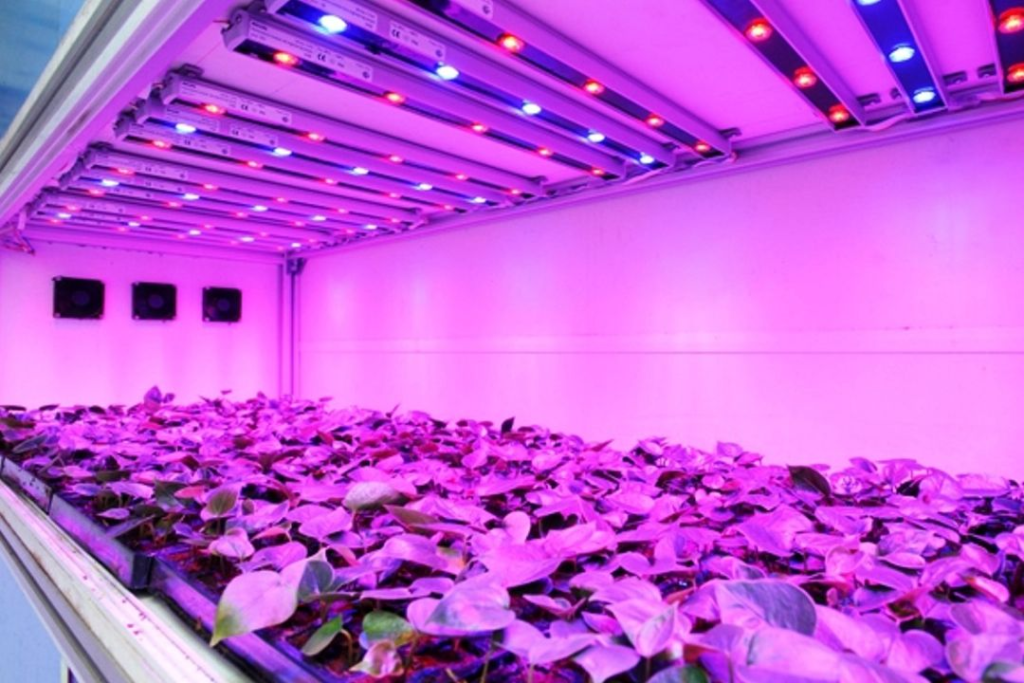
Moreover, it is worth noting that the light intensity and distance from the plants also play a significant role in their growth. Too much light can damage the plants, while insufficient light can hinder their development. You need to find the right balance by adjusting the height and intensity of the grow lights to ensure the plants receive adequate light without being overwhelmed. A light meter can be a valuable tool for measuring the light intensity and ensuring it falls within the optimal range for your plants.
By creating a well-planned and tailored light schedule, you can provide your hydroponic plants with the ideal conditions for maximum growth. Remember to consider the specific requirements of your plants’ growth stages, adjust the light spectrum accordingly, determine the appropriate light duration, and monitor the light intensity and distance. With a thoughtful approach to your light schedule, you can help your plants thrive and achieve exceptional yields in your hydroponic system.
Ensuring Proper Ventilation and Heat Management Around Grow Lights
Proper ventilation and heat management are crucial aspects of maximizing the performance and lifespan of your grow lights in a hydroponic setup. Without adequate ventilation, excessive heat can build up around the lights, which can lead to decreased efficiency, reduced plant growth, and even damage to the equipment. Therefore, it is essential to implement effective strategies to ensure proper ventilation and heat management around your grow lights.
One of the simplest ways to improve ventilation is by using fans. By strategically placing fans in your grow space, you can create a constant airflow that helps dissipate any heat generated by the lights. Additionally, the movement of air around the plants can also strengthen stems and prevent the development of mold or mildew. It is advisable to position the fans in such a way that they provide uniform air circulation, ensuring that each plant receives an adequate supply of fresh air.
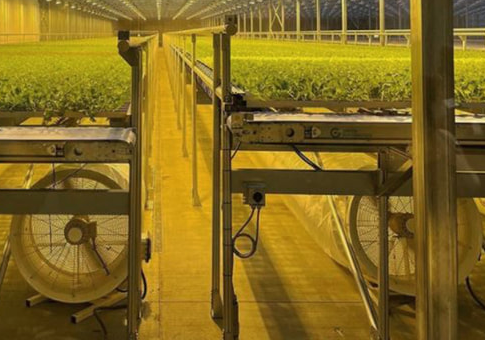
Another important aspect to consider is the distance between the plants and the grow lights. When the lights are placed too close to the plants, they can generate excessive heat, causing damage to the foliage. On the other hand, if the lights are too far away, they may not provide sufficient coverage and intensity for optimal plant growth. It is crucial to strike a balance and determine the ideal distance based on the specific requirements of your plants and the type of grow lights being used. Regularly monitoring the temperature and adjusting the distance accordingly will help ensure that the plants receive the right amount of light and heat.
Monitoring and Maintaining the Quality of Grow Lights for Longevity
To ensure the longevity and effectiveness of grow lights in your hydroponic setup, monitoring and maintaining their quality is crucial. Regular inspection is necessary to identify any issues or potential problems that may arise. One key aspect to monitor is the overall condition of the bulbs or LEDs. Check for any signs of wear, such as discoloration, dimming, or flickering. Replace any faulty bulbs promptly to maintain optimal light output.
Another important factor to consider is the cleanliness of the light fixtures. Dust, dirt, or debris can accumulate on the surface of the bulbs or LEDs, reducing their efficiency and affecting light penetration. Regularly clean the fixtures using a soft cloth or brush to remove any build-up. Additionally, it is essential to keep the surrounding area free from obstructions or clutter that may block the light distribution.
Besides inspections and cleaning, it is crucial to keep an eye on the temperature of the grow lights. Excessive heat can not only reduce their lifespan but also lead to heat stress on your plants. Ensure that the lights are properly ventilated and that there is adequate airflow in your grow room. Consider using fans or other cooling mechanisms to maintain a suitable temperature range.
By actively monitoring and properly maintaining the quality of grow lights, you can maximize their lifespan and efficiency, ensuring that your hydroponic plants receive the optimal light they need for healthy growth. This attention to detail will contribute to the success of your hydroponic garden and ultimately lead to bountiful harvests.
Identifying and Addressing Common Issues with Grow Lights in Hydroponics
Common issues with grow lights in hydroponics can often hinder the success of plant growth and yield. One common issue is inadequate light distribution, which can lead to uneven growth and lower productivity. This can be addressed by using light reflectors and light movers to optimize light distribution throughout the growing area. By reflecting and redirecting light, these tools ensure that every plant receives an equal amount of light, promoting uniform growth and maximizing productivity.
Another common issue is the improper spectrum of light being used. Different plant species have specific light spectrum requirements for optimal growth and development. Using the wrong spectrum can result in stunted growth or poor fruiting. It is crucial to select grow lights that provide the appropriate spectrum for the specific plants being cultivated. LED grow lights, for example, allow growers to customize and adjust the spectrum of light to match the specific needs of their plants. By addressing this issue and providing the correct spectrum, growers can ensure healthy and productive plants in their hydroponic systems.
| Issue | Identification | Solution |
|---|---|---|
| Insufficient Light | Slow growth, leggy plants | Increase intensity, adjust duration, upgrade lights |
| Light Burn | Yellow/brown leaf edges, bleaching | Raise lights, decrease intensity |
| Uneven Light Distribution | Unequal growth, inconsistent yield | Adjust light placement, use reflectors |
| Overheating | High temperature, reduced efficiency | Install ventilation, use heat-resistant fixtures |
| Inadequate Spectrum | Poor development, lack of flowering | Choose full-spectrum lights, use specialized lights |
| Electrical Issues | Flickering lights, inconsistent output | Check/replace bulbs, ensure proper connections |
| Incorrect Light Cycle | Delayed/premature flowering | Adjust light cycle to match plant’s natural cycle |
| Inadequate Light for Seedlings | Leggy seedlings, poor germination | Use lower intensity, provide adequate light |
| Light Intensity Adjustment | Monitor plant response, avoid sudden changes | Gradually adjust intensity for acclimation |
Utilizing Light Reflectors and Light Movers to Optimize Light Distribution
Light distribution is a crucial factor in optimizing plant growth in hydroponics. By utilizing light reflectors and light movers, gardeners can ensure that every plant receives an equal amount of light, promoting balanced and healthy growth. Reflectors, such as aluminum or mylar sheets, can be strategically placed around the grow lights to redirect and diffuse light, preventing hot spots and shadowed areas. This allows for a more even distribution of light across the plants, reducing the risk of uneven growth or nutrient deficiencies.
Light movers, on the other hand, are mechanical devices that move grow lights back and forth along a rail system. This movement mimics the natural motion of the sun, ensuring that all plants receive light from various angles and directions. By constantly changing the position of the lights, light movers prevent any single plant from receiving too much or too little light, promoting uniform growth throughout the hydroponic system. Furthermore, the dynamic movement provided by light movers stimulates the plants and encourages strong and sturdy stems, resulting in healthier and more resilient plants overall.

When utilizing light reflectors and light movers, gardeners should carefully consider their setup and the specific needs of their plants. It is essential to position the reflectors or light movers to maximize light coverage on the plants and to regularly adjust their placement to accommodate the growth and changing size of the plants. By optimizing light distribution through the use of reflectors and light movers, gardeners can create an environment that closely mimics the natural conditions required for successful plant growth, resulting in higher yields and healthier plants in their hydroponic systems.
Supplementing Grow Lights with Natural Sunlight for Enhanced Growth
Supplementing grow lights with natural sunlight is an effective way to enhance the growth of plants in a hydroponic system. While grow lights provide a controlled light source that can be adjusted to meet the specific needs of different plants, natural sunlight offers a full spectrum of light that cannot be replicated artificially.
Natural sunlight contains a wide range of wavelengths, including ultraviolet (UV) and infrared (IR) light, which are essential for plant growth and development. UV light stimulates the production of secondary metabolites, such as flavonoids and anthocyanins, which contribute to the plant’s overall health and resilience. Additionally, IR light helps regulate plant respiration and photosynthesis efficiency, leading to improved growth and yield.
When supplementing grow lights with natural sunlight, it is crucial to consider the intensity and duration of exposure. Some plants may require more sunlight than others, so it’s essential to research the specific light requirements for the plants in your hydroponic setup. Monitoring the light intensity and duration can be achieved by using light meters and sensors to maintain the optimal balance between artificial and natural light sources. By providing plants with a combination of grow lights and natural sunlight, you can promote healthy photosynthesis, increase plant vigor, and ultimately enhance the overall growth of your hydroponic garden.
Implementing Light Spectrum Adjustments for Specific Plant Needs
When it comes to implementing light spectrum adjustments for specific plant needs in hydroponics, it is important to understand the role that different light wavelengths play in plant growth and development. Each wavelength of light corresponds to a specific color, and plants have different requirements for optimal growth at different stages of their life cycle.
| Plant Type | Light Spectrum Adjustment | Recommended Light Spectrum |
|---|---|---|
| Leafy Greens | Increase blue and red light | 450-500 nm (Blue) and 640-680 nm (Red) |
| Flowering Plants | Enhance red light and add some blue | 620-680 nm (Red) and 430-480 nm (Blue) |
| Fruit-bearing Plants | Boost red and blue light | 640-680 nm (Red) and 430-480 nm (Blue) |
| Succulents/Cacti | Provide full spectrum with emphasis on blue | 400-700 nm (Full Spectrum with Blue emphasis) |
| Herbs | Balanced spectrum with emphasis on blue | 400-500 nm (Balanced with Blue emphasis) |
| Seedlings | High-intensity blue light for vegetative growth | 400-500 nm (High-intensity Blue) |
| Low-light Plants | Balanced spectrum with lower light intensity | 400-700 nm (Lower light intensity) |
For example, blue light is crucial during the vegetative stage as it promotes leaf growth and helps plants establish a strong foundation. On the other hand, red light is important during the flowering stage as it stimulates fruit and flower production. By adjusting the light spectrum using specialized LED grow lights or filters, hydroponic growers can provide their plants with the specific wavelengths of light that they need at each stage. This targeted approach can result in healthier plants, increased yields, and improved overall quality of the harvested crops.
• Blue light promotes leaf growth and helps establish a strong foundation during the vegetative stage.
• Red light stimulates fruit and flower production during the flowering stage.
• Adjusting the light spectrum using specialized LED grow lights or filters allows for targeted delivery of specific wavelengths of light at each stage.
• This targeted approach can result in healthier plants, increased yields, and improved overall quality of harvested crops.
Using Light Meters and Sensors to Measure and Optimize Light Levels
Light meters and sensors play a crucial role in hydroponics by allowing growers to accurately measure and optimize light levels for their plants. These tools provide valuable data that can be used to adjust light intensity, duration, and spectrum, ensuring optimal conditions for plant growth.
Light meters are used to measure the intensity of light in a given area, usually expressed in units such as lux or foot-candles. By taking readings at different points within the growing area, growers can identify any inconsistencies or variations in light levels. This information helps them determine if additional lighting is needed or if adjustments should be made to existing lighting setups. Light meters also allow growers to monitor the effectiveness of their lighting systems over time and make informed decisions about when to replace bulbs or upgrade equipment.
Sensors, on the other hand, provide real-time feedback on the light environment surrounding the plants. These devices can measure not only the intensity but also the quality and duration of light. For example, some sensors can detect the specific wavelengths of light, allowing growers to monitor and optimize the spectrum for different growth stages or specific plant requirements. By gathering this data, growers can fine-tune their lighting setups to provide the ideal conditions for their crops, leading to faster growth, higher yields, and better overall plant health.
Understanding the Impact of Light Distance and Intensity on Plant Health
Light distance and intensity play a crucial role in determining the health and growth of plants in hydroponic systems. When it comes to light distance, finding the optimal placement can make a significant difference in plant development. Placing the grow lights too close to the plants can result in light burn, leading to wilting, discoloration, and even stunted growth. On the other hand, if the lights are too far away, the plants may not receive adequate light intensity, hindering their photosynthesis process and slowing down their overall growth. Achieving the right balance is essential for maximizing plant health and yield.
Aside from distance, light intensity is another key factor to consider. Different stages of plant growth require varying levels of light intensity. During the vegetative stage, plants thrive under higher light levels, promoting lush foliage and strong root development. In contrast, during the flowering stage, plants benefit from lower light levels to encourage proper bud formation and fruiting. It’s crucial to adjust the light intensity accordingly to match the specific growth stage of your plants. By providing the appropriate intensity, you can ensure optimal photosynthesis rates, nutrient uptake, and overall plant health. Stay tuned for more insights on how to adjust light intensity and duration for different growth stages to maximize your hydroponic plant’s potential.
Incorporating Light Cycles and Dark Periods for Balanced Growth
Incorporating light cycles and dark periods is crucial for achieving balanced growth in your hydroponic plants. The regular alternation between light and dark periods mimics the natural day-night cycle that plants experience in their native environments. This cycle is known as the photoperiod, and it plays a significant role in regulating various physiological processes in plants.
During the light cycle, plants undergo photosynthesis, converting light energy into chemical energy and producing oxygen as a byproduct. This process is crucial for plant growth and development. On the other hand, the dark period allows plants to engage in other important activities, such as respiration and nutrient uptake. It also provides them with the much-needed rest and recovery time.
To determine the optimal light and dark periods for your hydroponic setup, it’s essential to consider the specific needs of your plants. Different plant species have varying light requirements and responses to photoperiods. Some plants require longer periods of darkness for proper growth, while others thrive with shorter dark periods. Consulting reliable horticultural resources or specific plant guides can provide you with valuable insights on the recommended light and dark duration for different types of plants.
Maintaining consistency and providing a consistent light and dark cycle throughout a plant’s growth stages is critical. This stability helps plants synchronize their internal biological processes, ensuring healthy growth and development. Implementing a programmable timer or utilizing advanced hydroponic systems with built-in light cycle controls can simplify the process and make it more manageable.
In summary, incorporating light cycles and dark periods in your hydroponic setup is vital for balanced growth in your plants. By replicating natural day-night cycles, you provide the necessary conditions for photosynthesis, respiration, and rest, allowing your plants to thrive. Understanding the specific light requirements of your plant species and maintaining consistent lighting schedules are key factors in achieving optimal results in your hydroponic garden.
Troubleshooting Tips for Efficiently Using Grow Lights in Hydroponics
When using grow lights in hydroponics, it is important to troubleshoot any issues that may arise to ensure efficient and effective plant growth. One common problem that growers encounter is light burn. Light burn occurs when plants are exposed to intense light for extended periods, leading to leaf burn and stunted growth. To prevent light burn, it is crucial to monitor the distance between the grow lights and the plants. Adjusting the height of the lights or using light movers can help distribute the light evenly and reduce the risk of burn.
Another issue that may occur is uneven light distribution, which can result in uneven plant growth and lower yields. This can be caused by improper placement of the grow lights or the use of inadequate light reflectors. To address this problem, it is essential to position the lights at the correct angle and use high-quality reflectors to maximize light distribution. Additionally, periodic rotation of plants can help ensure that all plants receive adequate light from different angles. By troubleshooting these common issues, growers can optimize the use of grow lights in hydroponics and achieve healthier and more productive plants.
What is the best type of grow light to use in hydroponics?
The best type of grow light to use in hydroponics depends on the specific needs of your plants. Some popular options include fluorescent, LED, and high-intensity discharge (HID) lights.
How far should grow lights be placed from hydroponic plants?
The distance between grow lights and hydroponic plants should vary based on the type of light and the growth stage of the plants. As a general guideline, fluorescent lights should be placed about 6-12 inches away, while LED lights can be placed closer, usually around 12-24 inches.
Can I adjust the intensity and duration of the grow lights for different growth stages?
Yes, it is important to adjust the intensity and duration of grow lights for different growth stages. For example, during the vegetative stage, plants generally require around 16-18 hours of light per day at a higher intensity, while during the flowering stage, they may require around 12 hours of light at a lower intensity.
How can I ensure proper ventilation and heat management around grow lights?
To ensure proper ventilation and heat management around grow lights, it is important to use fans or other ventilation systems to circulate air and prevent heat buildup. Additionally, using heat-resistant materials for your hydroponic setup and maintaining adequate spacing between plants and lights can help reduce heat-related issues.
What are some common issues with grow lights in hydroponics?
Common issues with grow lights in hydroponics include overheating, light burn, inadequate light distribution, and poor light quality. These issues can be addressed by monitoring temperatures, adjusting light distance and intensity, using reflectors or light movers, and regularly maintaining and replacing grow lights.
Can I supplement grow lights with natural sunlight in hydroponics?
Yes, supplementing grow lights with natural sunlight can enhance plant growth in hydroponics. If possible, consider placing your hydroponic setup near a window or using transparent coverings to allow natural sunlight to complement the artificial lighting.
How can I adjust the light spectrum for specific plant needs?
The light spectrum can be adjusted by using different types of grow lights or by using specific color filters or LED panels. Red light promotes flowering, blue light enhances vegetative growth, and a combination of red and blue light can be used for overall plant development.
How can light meters and sensors help optimize light levels in hydroponics?
Light meters and sensors can provide accurate measurements of the light intensity and spectrum in your hydroponic setup. By using these tools, you can ensure that your plants receive the optimal light levels for their growth and adjust the lighting setup accordingly.
Why is it important to incorporate light cycles and dark periods in hydroponics?
Light cycles and dark periods are important in hydroponics because they mimic natural day and night cycles, which are crucial for the overall health and development of plants. Plants require a period of darkness to rest and carry out essential processes such as respiration.
What are some troubleshooting tips for efficiently using grow lights in hydroponics?
Some troubleshooting tips include regularly monitoring and maintaining the grow lights, adjusting light intensity and distance as needed, using reflectors or light movers to optimize light distribution, and ensuring proper ventilation and heat management.

Pallavi Gupta is a burgeoning writer at SouthElMonteHydroponics, blending her passion for data analysis with a keen interest in biotechnology. Currently pursuing a Bachelor’s in Biotechnology at Amity University, Pallavi delves into the intricacies of life sciences while gaining hands-on experience in the exciting world of data analysis. Her unique background provides a fresh perspective on hydroponic farming, as she explores the intersection of biotechnology and sustainable agriculture. Through her writing, Pallavi aims to bridge the gap between data-driven insights and innovative farming practices, inspiring others to harness technology for a greener future.


